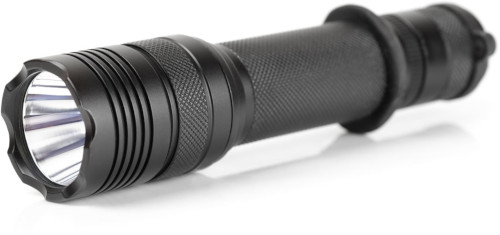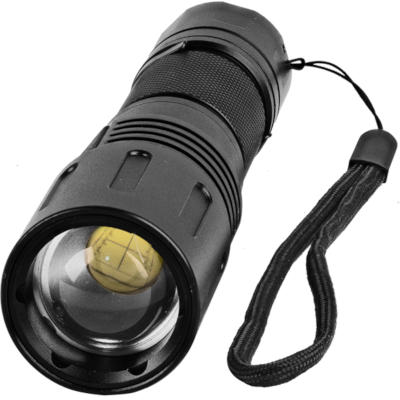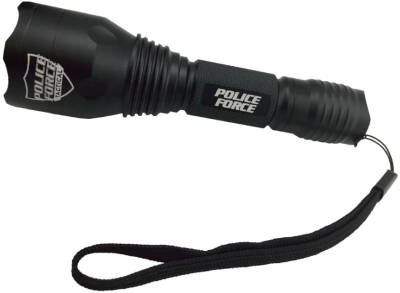How to Use a Tactical Flashlight for Self-Defense: Stay Protected

A tactical flashlight isn’t just a tool for seeing in the dark—it’s a powerful self-defense weapon that can help you stay safe in threatening situations. Whether you’re walking to your car or navigating a dimly lit street, a tactical flashlight self defense strategy can give you the upper hand. With the ability to blind an attacker, signal for help, or even strike if necessary, a tactical flashlight is a must-have for personal safety.
In this guide, TBOTECH walks you through how to use a tactical flashlight effectively for self-defense, key features to look for, and top flashlights to consider. Stay prepared, stay protected, and take control of your safety today!
Why a Tactical Flashlight is a Powerful Self-Defense Tool
Tactical flashlights are designed for more than illumination—they’re built to protect. Here’s why they’re an essential part of any self-defense strategy:
- Blinding Capability: A high-lumen beam (500+ lumens) can temporarily blind an attacker, giving you a critical window to escape or defend yourself.
- Striking Potential: Made from durable materials like aircraft-grade aluminum, many tactical flashlights can be used as an impact weapon in emergencies.
- Signaling for Help: A flashlight’s beam or strobe mode can alert bystanders or authorities, increasing your chances of getting assistance.
- Compact and Legal: Unlike other self-defense tools, tactical flashlights are generally legal in most places and easy to carry.
A Super Bright Light shined into someone's eyes Temporarily Blinds them.
Real-Life Scenario: While walking to her car after a late shift, Mia noticed a suspicious figure approaching. She quickly shined her tactical flashlight’s 1000-lumen beam into his eyes, disorienting him, and used the moment to run to a nearby store and call for help. Her flashlight gave her the edge she needed to stay safe.
How to Use a Tactical Flashlight for Self-Defense: 3 Key Techniques
Using a tactical flashlight effectively requires knowing the proper techniques. Here’s how to make the most of your flashlight in a self-defense situation:
1. Disorient an Attacker with a Blinding Flash
- Step 1: Hold the flashlight in your dominant hand, keeping it aimed downward as you walk to avoid drawing attention.
- Step 2: If you feel threatened, raise the flashlight quickly and shine the beam directly into the attacker’s eyes.
- Step 3: Use a strobe mode (if available) to cause further disorientation—the flickering light overwhelms their vision, giving you time to escape.
- Example: At a dimly lit bus stop, you notice someone approaching too closely. You flash your 1000-lumen beam into their eyes, causing them to stumble back, and use the moment to move toward a busier area.
2. Use the Flashlight as a Striking Weapon
- Step 1: Grip the flashlight like an ice pick, with the head facing outward and your thumb on the power button for quick activation.
- Step 2: If escape isn’t possible, target vulnerable areas like the attacker’s face, collarbone, or wrist with a firm strike.
- Step 3: Use the strike to create distance, then run to safety—striking should always be a last resort.
- Example: While hiking in a remote area, you’re confronted by an aggressive individual. You strike their wrist with your flashlight’s beveled edge, causing them to drop their weapon, and escape to a safer trail.
3. Signal for Help in an Emergency
- Step 1: Use the flashlight’s beam to flash an SOS signal (three short flashes, three long flashes, three short flashes) to alert bystanders or authorities.
- Step 2: Activate the strobe mode to draw attention in crowded or remote areas—its rapid flashing is highly visible.
- Step 3: In isolated locations, use the beam to help rescuers locate you by aiming it toward the sky or reflective surfaces.
- Example: Stranded on a dark road after a car breakdown, you use your flashlight’s strobe mode to signal passing vehicles, attracting help from a nearby motorist.
Police Force Tactical Flashlight
Key Features to Look for in a Tactical Flashlight for Self-Defense
Not all flashlights are built for self-defense—here’s what to prioritize when choosing one:
| Feature | Why It Matters |
|---|---|
| Brightness (Lumens) | 500+ lumens is ideal for blinding an attacker—1000+ lumens offers maximum disorientation. |
| Strobe Mode | Rapid flashing overwhelms an attacker’s vision, making it harder for them to pursue you. |
| Durability | Aircraft-grade aluminum ensures the flashlight can withstand impact as a striking tool. |
| Grip & Size | A compact size (4-6 inches) fits easily in your hand or pocket, with a textured grip to prevent slipping. |
| Water Resistance | An IPX-4 rating or higher ensures reliability in rain or other wet conditions. |
| Battery Type | Rechargeable batteries or CR123A batteries ensure long-lasting power in emergencies. |
Looking for a tactical flashlight that checks all these boxes? Explore TBOTECH’s range of self-defense flashlights in our Tactical Flashlights Category.
Best TBOTECH Tactical Flashlights for Self-Defense
TBOTECH offers a variety of tactical flashlights designed for self-defense, ensuring you’re prepared for any situation. Here are our top picks:
- Police Force Tactical Flashlight: A 1000-lumen flashlight with a strobe mode, made from aircraft-grade aluminum with a beveled edge for striking, ideal for self-defense in any scenario. Shop Police Force Tactical Flashlight
- Heavy Duty Tactical Flashlight: A 3000-lumen flashlight with a zoomable beam and strobe mode, featuring a rugged design for impact resistance, perfect for high-risk situations. Shop Heavy Duty Tactical Flashlight
- Compact Tactical Flashlight with Clip: A 220-lumen flashlight with a clip for easy carry, featuring a durable aluminum body, ideal for daily use and self-defense.
Find more options in our Tactical Flashlights Category—designed to keep you safe and prepared.
Legal Considerations for Using a Tactical Flashlight for Self-Defense
Tactical flashlights are generally legal to carry and use for self-defense, but there are some considerations to keep in mind:
- Local Laws on Brightness and Strobe: Some jurisdictions may restrict high-lumen flashlights (e.g., 1000+ lumens) or strobe modes if deemed a public nuisance—check local regulations.
- Airline Restrictions: The TSA allows flashlights in carry-on luggage, but high-lumen models may be flagged at security—pack them in checked bags to avoid issues.
- Using a Flashlight as a Weapon: While legal to carry, using a flashlight to strike an attacker may be considered the use of force—ensure your actions are justified as self-defense under local laws.
- State-Specific Rules: Some states may have unique restrictions on self-defense tools—always verify with local authorities before carrying.
Explore More Self-Defense Resources
- Shop Stun Guns – Reliable close-range protection.
- Shop Pepper Spray – Affordable and effective defense.
Stay Prepared with TBOTECH’s Tactical Flashlights
A tactical flashlight is a versatile and legal self-defense tool that can help you stay safe in any situation. By mastering the techniques outlined above and choosing the right flashlight, you can improve your security with confidence.
Do you have a self-defense tip using a tactical flashlight? Share it in the comments below—we’d love to hear from you! Ready to equip yourself with a top-quality flashlight? Explore TBOTECH’s range of tactical flashlights in our Tactical Flashlights Category today and take control of your safety.
Add your comment now!
Post Comment

